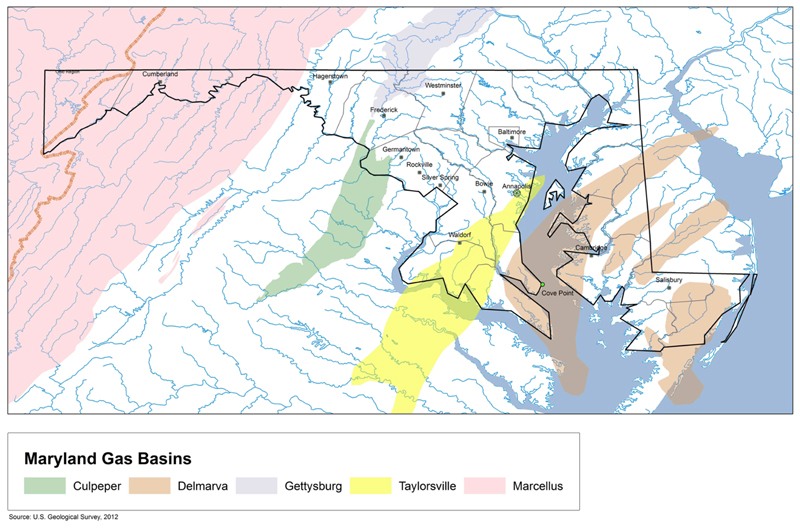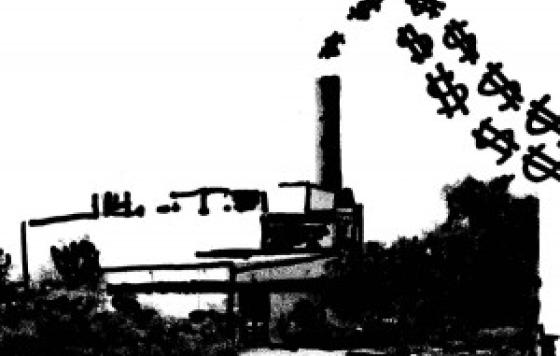
When Marylanders consider the risk of fracking in our state, we usually think of the Western Maryland counties – Washington, Alleghany, and Garret – that lie above the Marcellus Gas Basin. But smaller gas basins cross all parts of our state, including two in Frederick County. The Culpeper Basin stretches north from Virginia beneath Adamstown and Ballenger Creek to southern Frederick City; the Gettysburg Basin comes south from Pennsylvania beneath the Monocacy River touching Emmitsburg, Thurmont, and the northern edge of Frederick City including parts of Fort Detrick. All together, 19 percent of Frederick County has frackable gas beneath it – and that puts our farms, rivers, and drinking water at risk.
The hazards our neighboring states have seen from fracking are well known and well-documented, and without legislative action, fracking will become legal in Maryland in Fall 2017. In response, several local governments with gas reserves beneath them – Prince George’s County, Montgomery County, and the town of Friendsville in Garrett County – have taken action to make sure that fracking never comes to their lands.
Frederick County residents are already organizing and publicizing the risks that fracking could bring. With so many homes in Frederick reliant on wells for drinking water, our groundwater is far too valuable to risk. And when Frederick is concerned about even positive energy development like solar panels taking up valuable agricultural land, it should be a no-brainer to use every means possible to ensure that fracking can’t come to Frederick County farms. It’s time for Frederick County to stand up and protect itself from fracking by passing a ban this fall.
Contact County Council President Bud Otis today to urge him to introduce a ban on fracking as soon as possible. The safety of our farms, our rivers, and our drinking water depends on it!


